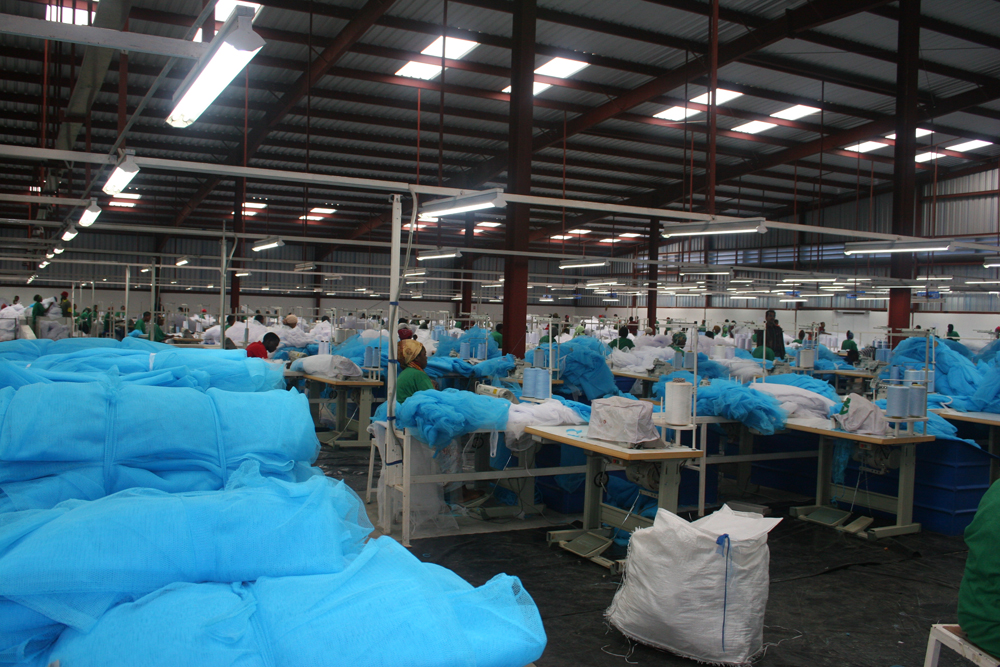ZIMBABWE'S textile industry needs at least $200 million in the short to medium term to recapitalise, according to a latest study on the country's cotton and clothing industry.
About $50 million is required to support cotton farmers while the same amount is needed for plant upgrades, a research by the Zimbabwe Economic Policy Analysis and Research Unit said.
The textile sector also needs to recapitalise and restructure to achieve plant and technology upgrades to raise production capacity.
"As a high volume, low margin business, equipment with technology upgrade is necessary to raise production capacity in order to reduce production costs," said Zeparu.
"Costs of energy and employment can then be amortized besides an improvement in product quality, production efficiencies and competitiveness. Approximately $200 million will be required as medium to long term loans for the industry."
Zimbabwe's textile sector used to be one of the country's major employers, employing about 51 000 people at its peak. By 2005 employment levels had reduced to 28 822 with 22 178 job losses recorded. Considering the clothing sub-sector alone, employment numbers sharply reduced from 13 500 in 2009 to 12 506 in 2010, then to 8 627 in 2011 and to a mere 4 748 in 2012, according to the report.
Job losses in the clothing industry between 2009 and 2012 totalled 8 752, or 65 percent after dollarisation. The textile industry fared even worse than the clothing industry during the same period with such giants as David Whitehead, once the sector's largest firm, Cone Textiles or Modzone, Merlin and Cotton Printers all collapsing.
However, Zeparu noted that Zimbabwe has major competitive advantages over other textile manufacturing countries. These include proximity to the industry's primary raw material cotton in addition to skilled labour and a highly literate population.
But there is need for the creation of an enabling business environment to prevail in Zimbabwe.
"Investors will always follow where there is potential for profit and where risks are predictable. Zimbabwe needs to complete its chapter on indigenisation once and for all. The country should create competitive advantages through legislation."
The textiles and clothing sub-sector is an important arm of the manufacturing sector.
The industry accounted for between 12 percent and 15 percent of manufacturing gross output during the period 1985 to 1995. Over a 10 year period through to 2004 the index volume of textiles and clothing taking 1990 as the base-100, was consistently above 70. The collapse of the sub-sector therefore left a very big structural hole in the manufacturing sector.
"It is without doubt that the recovery and further development of the cotton chain has potential to underpin industrialization in Zimbabwe in future. The challenge before the Government is how to utilize the cotton resource to industrialize in the context of a liberal market and with global competitive pressures."
- The Herald
 Zimbabwe launches new airline
Zimbabwe launches new airline  Hichilema meets Chivayo
Hichilema meets Chivayo  Millions celebrate Diwali festival in India
Millions celebrate Diwali festival in India  SA bitcoin firm mulls Zimbabwe listing
SA bitcoin firm mulls Zimbabwe listing  Gold edges up as traders await guidance
Gold edges up as traders await guidance  Airlink applies for Lanseria to Harare, Bulawayo route
Airlink applies for Lanseria to Harare, Bulawayo route  Young Investment Professional (YIP) Graduate Programme 2019
Young Investment Professional (YIP) Graduate Programme 2019 











 Young Investment Professional (YIP) Graduate Programme 2019
Young Investment Professional (YIP) Graduate Programme 2019
Editor's Pick